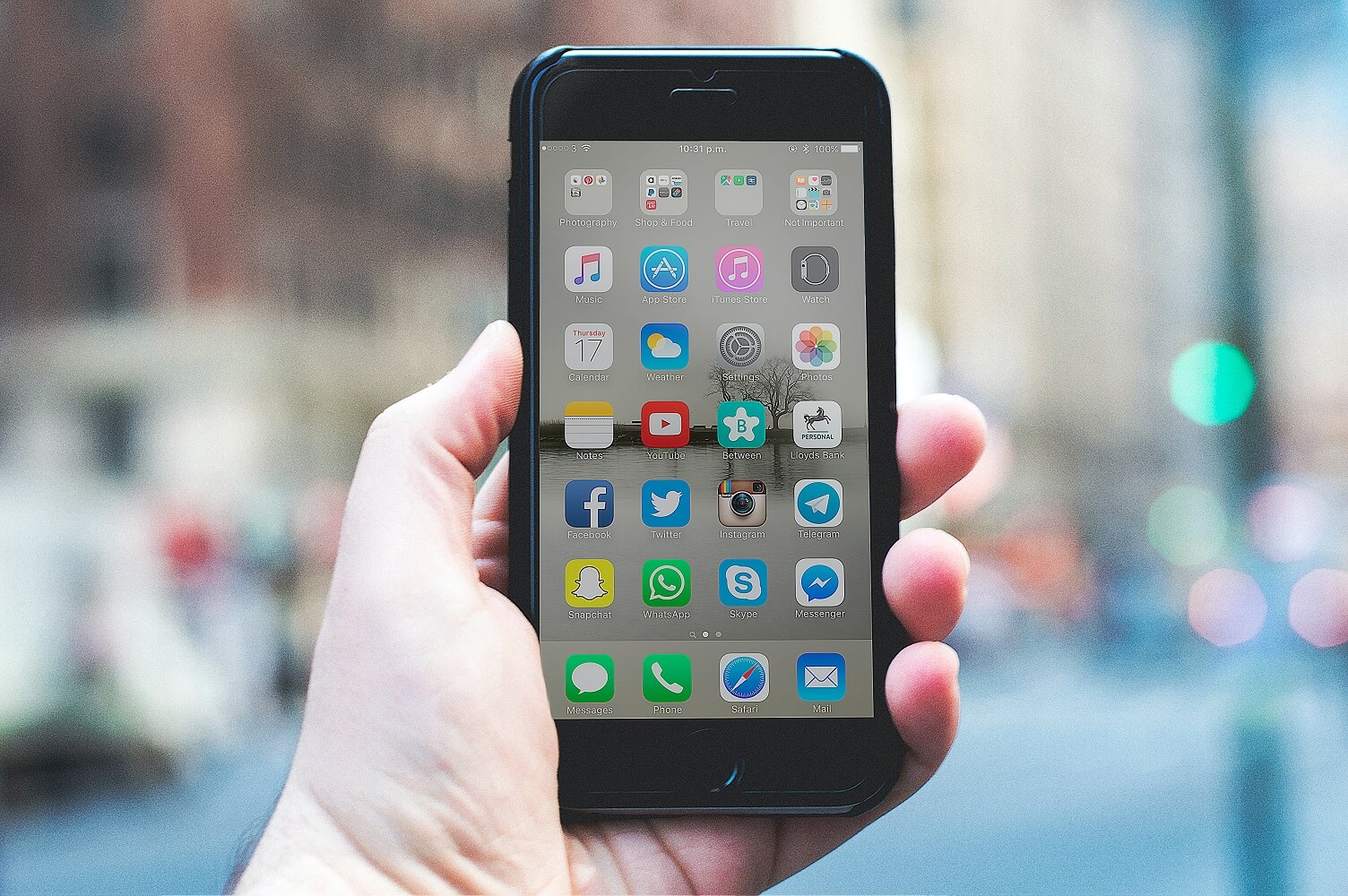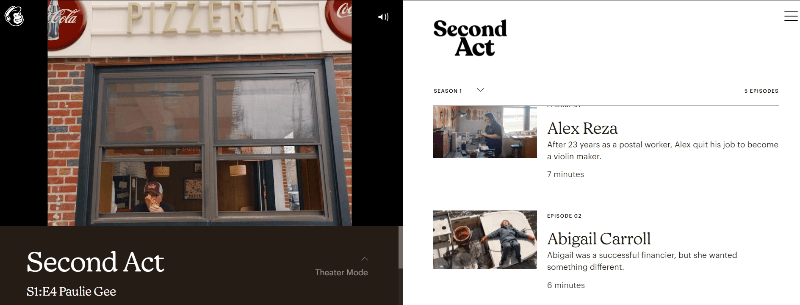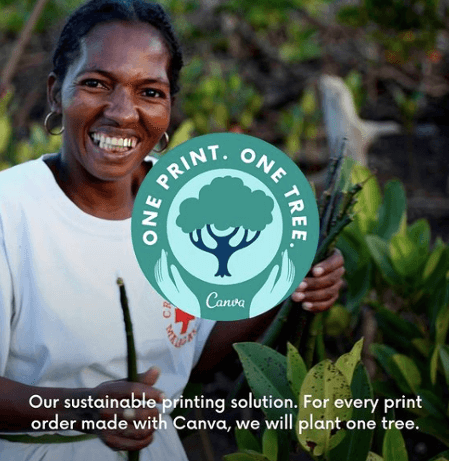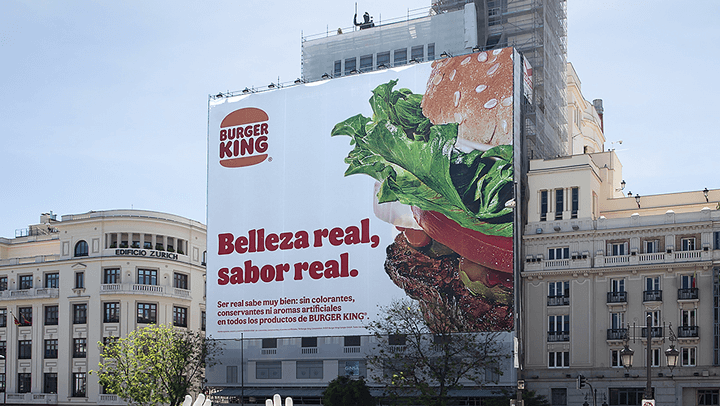The world of marketing is fast-changing. As the earth spins, new social networks appear and Google’s algorithms change—all seemingly overnight.
Amid all this, one thing remains constant: the brand.
What works today may be relegated to just a memory days from now. And if we were also to consider the shift in advertising consumption, we’d find marketers everywhere racking their brains to find a new way to create impact.
This is where branded content comes in. It’s a relatively new marketing technique based on a basic, fundamental idea to connect the audience with—yup, you guessed it—the brand.
In this post, you’ll see this word scattered throughout the article like a mantra:
brand, brand, brand, brand…
So what is branded content? How can you put it into practice? And what are some of the top branded content examples?
Want the answers to these? Read on.
Branded content is a relatively new marketing technique based on a basic, fundamental idea to connect the audience with—yup, you guessed it—the brand.Click To TweetWhat is branded content?
To kick things off, here’s a short and simple branded content definition:
Branded content is a marketing technique based on creating content that talks about the brand’s values and less about its products or services.
Let’s face it. Advertising annoys us, invades our space, and interrupts our lives.
Nobody likes that.
So what branded content aims to do is change the rules of the game and present a very different way of creating an impact on consumers.
By creating relevant content, brands build an emotional link, which encourages users to search for them.
The main objective of this technique is not a direct sales conversion; its purpose is to get those who see you, the brand, to become your fans, followers, and loyal defenders. When this is achieved, sales will flow naturally and there is a much greater chance of getting repeat customers.
That said, to design a brand content strategy, you must set aside your product and focus more on emphasising your brand values so that consumers can identify with you.
But be careful. This technique is easily confused with other concepts such as native advertising or content marketing. So you know how to distinguish between them, here are their differences.
To design an effective brand content strategy, you must set aside your product and focus more on emphasising your brand values.Click To TweetBranded content vs native advertising
Native advertising differs from conventional advertising in that the former adapts its content to the different channels the brand is on: a YouTube video, an Instagram post, and so on.
It also camouflages itself in the flow of information, pretty much as if it were a regular post. This is a less invasive way of advertising.
However, with native advertising, the focus remains on the product, i.e. its goal is to boost direct sales. Branded content, on the other hand, aims to create relevant content that users want to consume and watch.
The main difference between the two techniques is their final goal. While native advertising seeks to sell, branded content seeks to excite.
Branded content vs content marketing
Another term that should not be confused with branded content is content marketing.
Content marketing is not a technique, but a strategy based on valuable and interesting content creation for your audience.
Thanks to content marketing, you can accompany the user throughout the buyer’s journey by creating relevant content for each step of the way: from before they even know they have a need for a product or service to the moment they decide to purchase one.
In short, content marketing is a marketing strategy and branded content is a technique that falls under this strategy.
Brand content development
If, at this point, you have decided to use branded content in your marketing strategy, here are some steps, techniques, and tips you can follow.
#1 Seek to generate emotions
If there is one thing and one thing only that characterises branded content, it is the search for emotions and the creation of a bond with the consumer.
When you share your brand values, you attract the attention of those who have the same values, which prompts them to see you as equals.
And that is where brands generate empathy. Through emotions, we can form a lasting impression on those who see us, laying the groundwork to create a sentimental bond.
One of the best ways to establish this bond is to feed them entertaining content. Most consumers use social networks to disconnect and for entertainment. So if you’re able to become one of their go-to sources of entertainment, well done.
#2 Engage in storytelling
As children, we’re told stories all the time and for all types of purposes: to learn certain values, to distract us, to make us reflect… And it has been proven that as adults, we remember a great deal from these stories.
Stories are everywhere. If you know how to tell them right, you essentially hold the key to engage with your users on an emotional level.
If you are determined to tell stories related to your brand, or, in other words, use brand storytelling, aim to create one that is simple and easy to remember: a story that talks about you but with your buyer cast as the main character. This way, you give them a sense of identity, which creates a bigger impact.
#3 Create conversation
Since the goal of branded content isn’t to get direct conversions, sales metrics are an unreliable source to determine whether your brand content strategy is working.
So then, how do you gauge the success of branded content? By analysing the interaction, conversations, and engagement generated.
If you start to see conversations created around your campaign and people starting to interact, give yourself (and your team) a pat on the back. That means that your branded content has resonated with the users.
In addition to social media engagement KPIs, the following metrics can also help you evaluate the success of a branded content strategy:
- Backlinks, especially if the anchor text or source page references the branded content campaign
- Branded searches and Google mentions of the campaign
- Direct traffic to the branded content page and/or homepage
- Referral traffic to the branded content page and/or homepage
- New users visiting your website vs. returning visitors
#4 Use different channels to go viral
When you start to generate dialogue and interaction, chances are, your content will start to get shared across different social media channels and may even go viral. Watch out for this because you need to be prepared if/when it happens.
How? By adapting the format of the content to the different platforms your buyers are on. Effective content on Facebook looks very different from effective content on YouTube or LinkedIn.
If you manage to get your content to go viral, it is a good indicator that your brand content strategy is doing well and reaching lots of people.
And if you want to go a step further and involve different channels in the same campaign, creating transmedia content is the way to go.
Good branded content generates emotions, uses storytelling, creates conversations, and engages on different channels.Click To TweetBranded content examples
The best way to understand branded content is to see it in action. To that end, we’ve gathered five of the best branded content campaigns as examples.
Let’s get to them.
1. Netflix
Netflix, the great TV-streaming giant, invests heavily in advertising.
If you follow their social media accounts, you’ll see that their content strategy is based on the use of memes inspired by the series and films on their platform.
But what’s interesting is the advertising they do on the streets—those giant posters that you’ve probably seen around your city—and their use of branded content in them.
This giant poster appeared a few weeks after the end of a lockdown in Spain in 2020 aimed to stem the spread of the coronavirus.
It reads: Still there? Get off Netflix.
As in any effective brand content strategy, the brand’s values stand out.
With this poster, Netflix is highlighting the beauty and value of enjoying life in the company of family and friends and encouraging those who were hooked on the platform during the lockdown (and boy, were there plenty!) to go out and get some fresh air.
It’s a brilliant touch of empathy by Netflix.
And notice how they’re not even trying to sell or promote their shows here?
What’s more, they’re even telling you to switch them off and go outdoors. It’s a masterstroke of reverse psychology with which they not only achieve empathising with their audience but also get you to pay attention to what they’re saying and switch off your screen.
2. Mailchimp
Mailchimp is a marketing automation platform that allows you to create and disseminate email campaigns. But the value that this company gives to branding and branded content is so great that one can be forgiven for mistaking them for a content production company.
On their website, you’ll find an “Inspiration” section where they have their own podcast, series, and original films that’ll touch your heart.
In this section, we find a spectacular example of branded video content: the series “Second Act”, where they share real stories about people who decided to drop everything and pursue their dreams.
After all, for them, such people (especially those thinking about venturing into entrepreneurship) are very important. Mailchimp knows its buyer personas very well and takes their needs into account by casting them as the protagonists of the show.
In addition, their use of real cases adds a powerful touch to the storytelling and forms a binding emotional impact on the user.
3. Canva
We’re gonna assume you know Canva, the online graphic design platform with endless amazing templates you can choose for your designs and even print out, because, well, who doesn’t know Canva?
One of Canva’s brand values is sustainability—something they are very proud of and talk about quite a lot on their social media.
To that end, they created a sustainable printing campaign called One print. One Tree. For every print order you place with them, Canva will plant a tree to counteract its environmental impact. In doing so, they’re empathising with users who are committed to the environmental cause.
4. Burger King
The fast-food company Burger King is remembered by most for its controversial campaigns against its eternal rival: McDonald’s (although, in this example, they have decided to leave them out).
Burger King is committed to offering its patrons an authentic taste without artificial colourings, preservatives or flavourings; in other words, natural food.
This is demonstrated by their slogan, Real Beauty, Real Taste, in which they argue that food that may not look presentable doesn’t necessarily equate to “bad” food and that it certainly doesn’t mean it’s inedible.
This brand content strategy serves two purposes: to reduce food waste and to normalise a certain type of beauty that is often considered to be unconventional—both gastronomically and socially.
This giant canvas forms a part of their branded content series, which also includes other pieces with slogans like “long live curves” and “wrinkles are beautiful.”
Not only are they connecting with their audience by jumping on a trend, but they’re also broadcasting the message about the authenticity of the food they serve.
5. Leroy Merlin
The protagonist of the final branded content example we bring you is the French home improvement chain, Leroy Merlin.
In one of their video brand content campaigns, they adopt such great use of storytelling that it is very much like a movie trailer. In fact, it’s not until the end where it becomes evident that it is branded content.
Leroy Merlin offers its buyers the value of building the home they want and enjoying it with those they love.
Building on this value and idea, the French company launched a series of videos called Build your life, in which we see different families building not only their homes but their own lives together.
This is a great example of branded content because of its use of emotions. Users watching the videos are able to connect with the protagonists on a deeper level as they share their excitement of starting something new together.
Here’s an example:
Branded content: Should I use it?
Now that you have the lowdown on branded content, there’s just one last thing to do: decide whether you want to apply it to your brand.
If your content strategy is already based on inbound marketing, branded content can be a great complement. With it, you can connect with your audience, be at the top of their minds, and make them purchase from you over and over again when they need your product/service.
Are you game?
Lin’s an ex-journalist who’s found her new love in content marketing. In her spare time, she’s on a secret conquest to find a solution to never having to cut her nails again.





